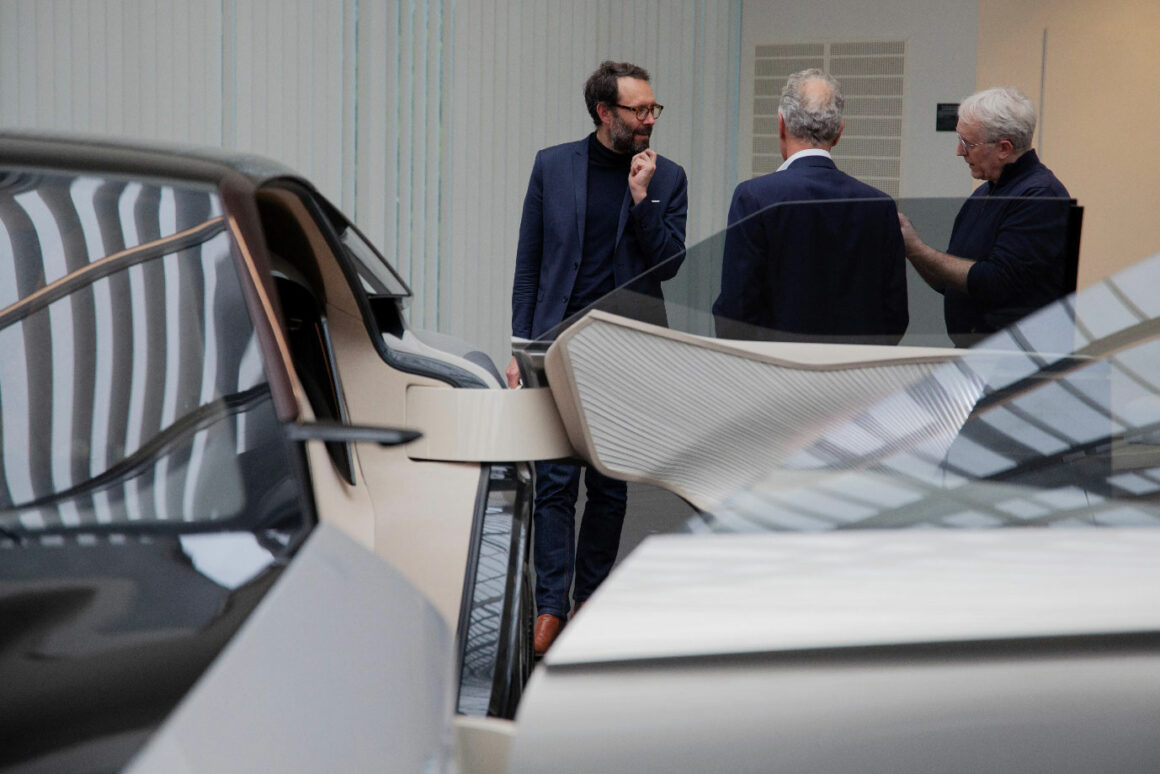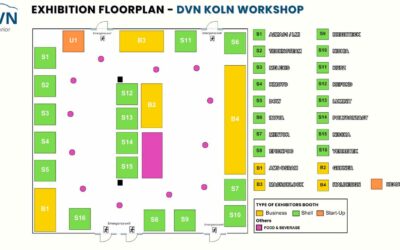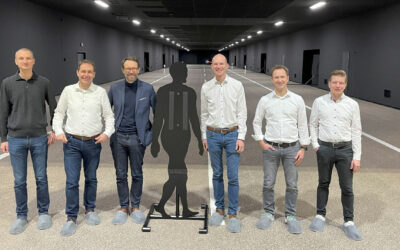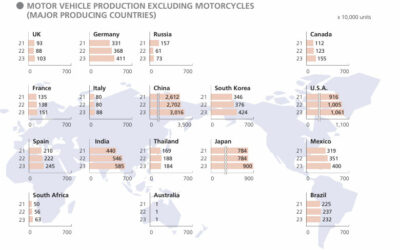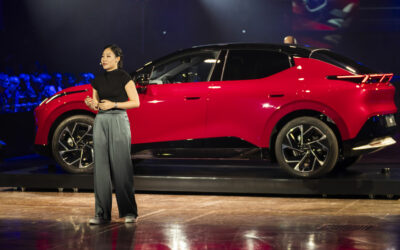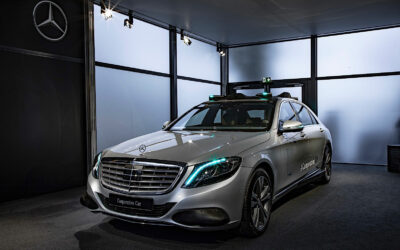DS Studio is in the Stellantis Creative Centre building.

The ADN (Automotive Design Network) was inaugurated in 2004, and renamed Creative Centre in 2024. Located in Vélizy, near Paris, this building houses Stellantis’ design studios for the automaker’s French brands: Citroën, Peugeot, and DS Automobiles. The architect of the ADN building was Jacques Ripault (« I imagined a building made up of horizontal layers, integrated in the landscape, symbolizing kinetics and light, all features of an automotive building »), and the lighting animation was created by James Turrel.
1,000 employees work there. Designers collaborate with engineers, working on the platforms, engines, equipment, and with the brand product teams.
DS as a brand was created in 2014, drawing on a long heritage from classic and well-loved Citroëns like the DS (in French, ‘DS’ is pronounced the same as the word for ‘Goddess’) and the SM.
In 1955, the first DS made its appearance and caused a sensation at the Paris Motor Show. A model of innovation, grace, and prestige, it embodied French expertise, panache, and avant-garde spirit—all of which still define the DS brand philosophy and inspire all their creations.
DS teams work with the same thirst for distinction and elegance to apply modern technology to classic French perfections such as directional headlamps and hydraulic suspensions, and make them strong identity elements, adapted to new mobility expectations.

Continuing the tradition of innovative lighting in the Citroën DSs of last century, DS brand lighting is front-and-centre:
- 2009: LED DRL in the DS3
- 2014: Sequential turn signals, infinite-mirror rear lamps, high-tech xenon headlamps, and 3-diamond signals on the DS3 facelift

- 2017: Mechanical welcome sequence on the DS7 and DS9 (hit those links to see videos) choreographically paying homage to the DS-SM swivelling headlamps

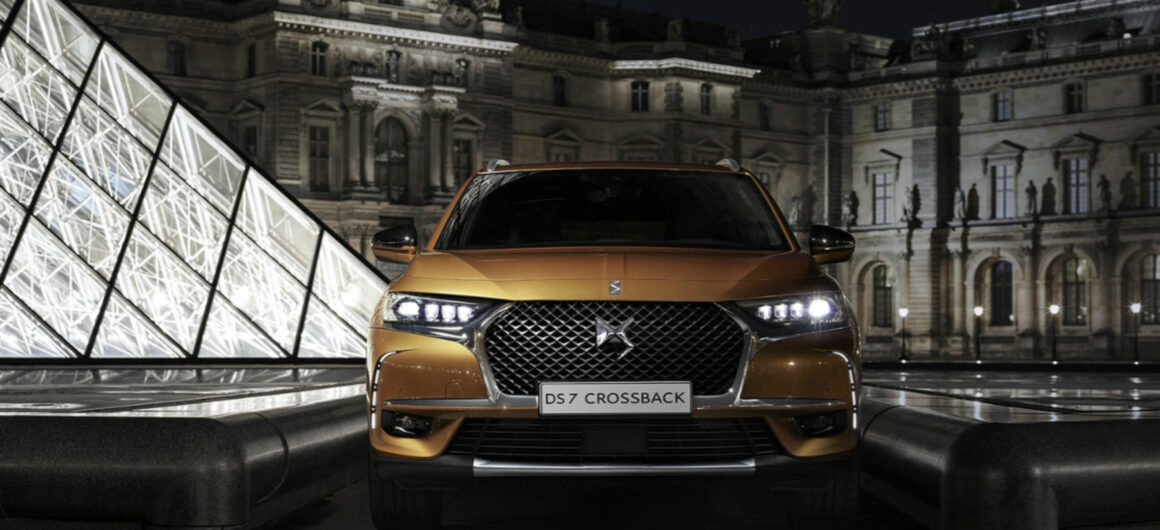
Robert Mudie started the discussion with an introduction about the DS lighting design team at the junction of styling and R&D.
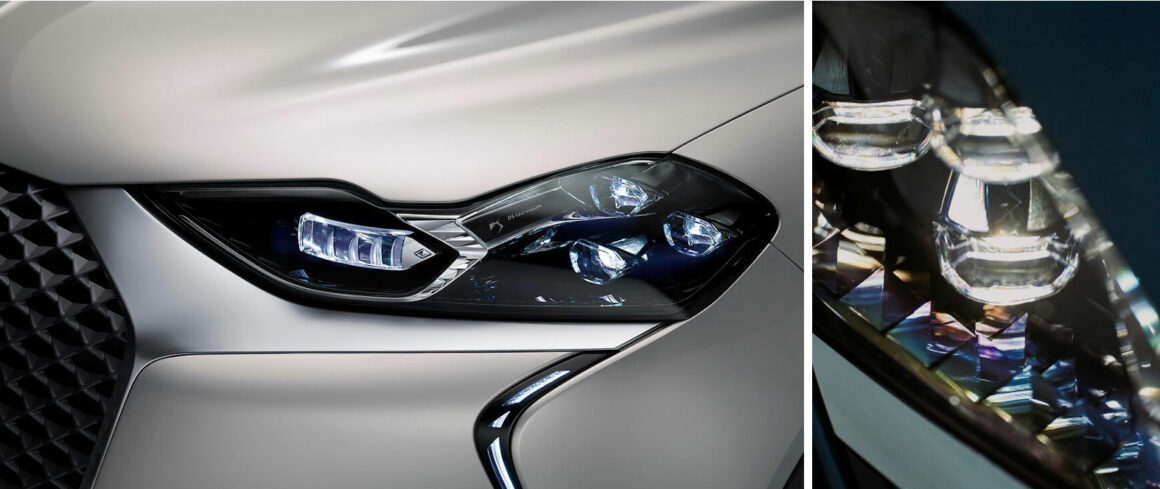
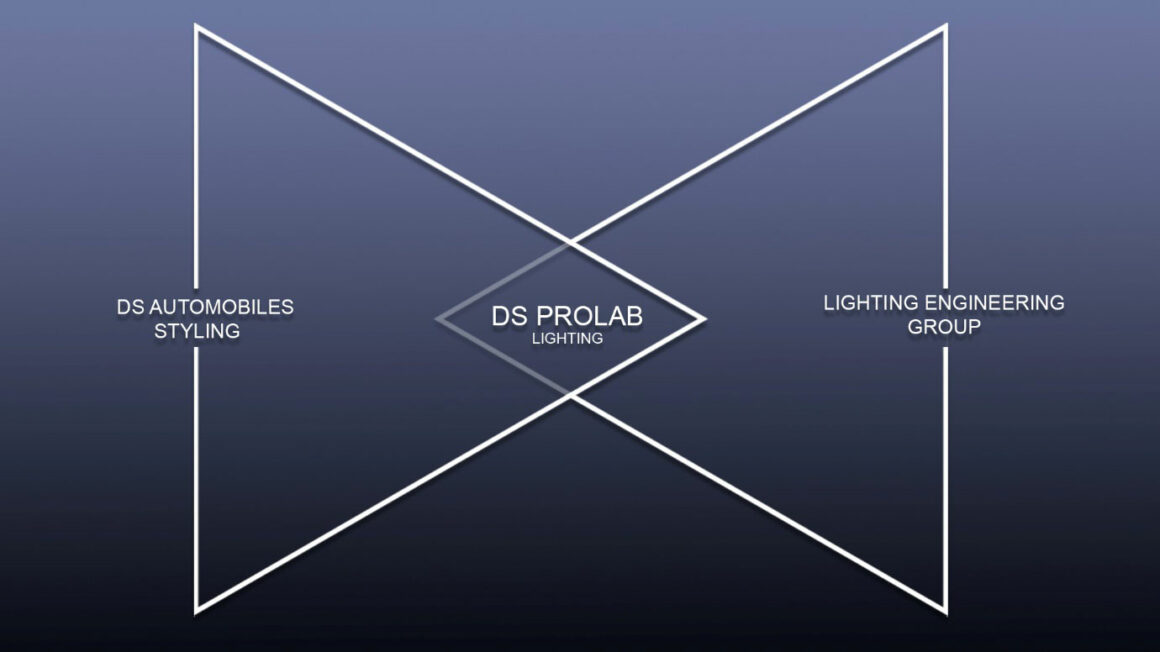
First words went directly to DS and SM DNA and the importance of its lighting design elements: the 3-module look started by the 1970s SM is always there in different interpretations. That’s the car on the left here, with the three yellow headlamps on each side (France required yellow headlamps until 1993):

DS also introduced canted-vertical DRL signatures with a variety of evolving interpretations:

The DS team is not a one-trick shop doing the same thing again and again; they are constantly pushing the evolution not just of technique but also technology. Fresnel optics, light guides, shy tech, and edge light have been developed over the years, yet always respecting the grand design theme of verticality.
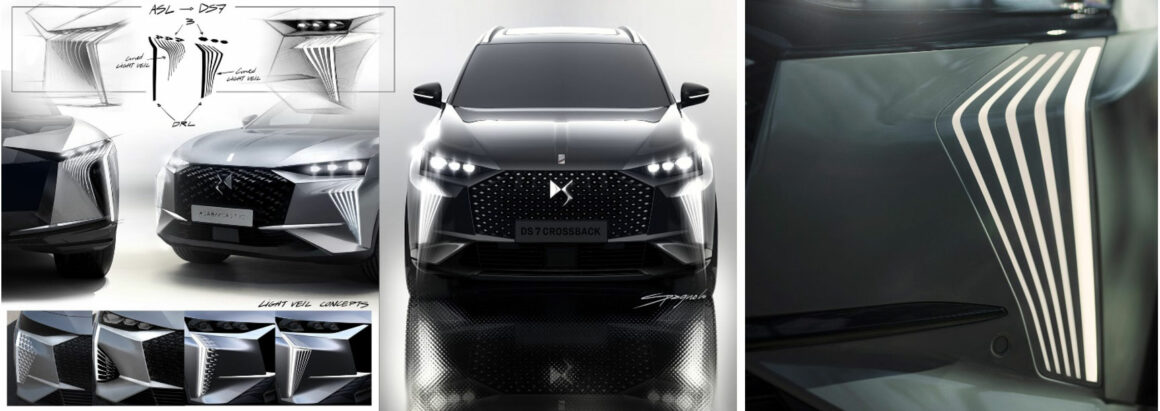
With the DS № 8 design, Mudie decided to go to a sharp-edged light design (called DS Lightblade), which helps lower the car’s aerodynamic drag with 2 dm2 (equivalent to 8 km of WLTP range).

This first design introduction in a vee shape was introduced on the DS E-Tense Performance concept in 2022, and now it has been put into production on the DS № 8.

On the № 8, lighting has totally replaced chrome on the exterior design. The car’s front lamp design includes a 48-pixel ADB solution from supplier Mind, based on a 3-module concept and providing the various AFS beam classes, including digital bending light.

Thierry Metroz described the introduction of the DS Luminascreen front grilleboard, which features DS’ first lit logo on the № 8. This was made possible by there being no combustion-engine version of the № 8; it is the brand’s first electric-only vehicle, so there was no need to provide for a radiator grille. And with lit logos allowed in Europe starting from January 2023, that paved the way from the regulatory standpoint. The EU regulation limits lit logos to 100 cm2, so the logo had to be downsized a bit compared to the proposal of 2020 on the DS Aero Sport Lounge and in 2022 on the E-Tense.
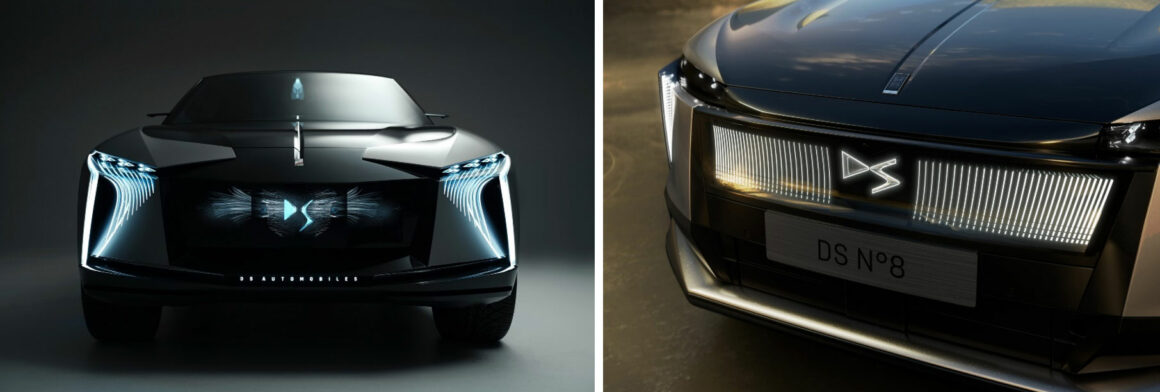
The logo is made by Flex-N-Gate with insert-moulding technology. It is embedded into a front panel with vertical lit lines. This optical design is composed on an interior optical blade with microöptics, illuminated with a horizontal flat PCB, and is part of the front position lamp.
There are two versions of this panel—with or without light. The lit version has admirably low power consumption of around 10 watts. The logo, which can be seen day and night, emphasizes the DS brand and sings visual harmony with the DRLs. It is also a reminder of first SM with its full-width glass cover lens over the complex-for-the-time headlight system—as well as the SM tribute just presented last year at the Chantilly Arts & Elegance Richard Mille event in France.
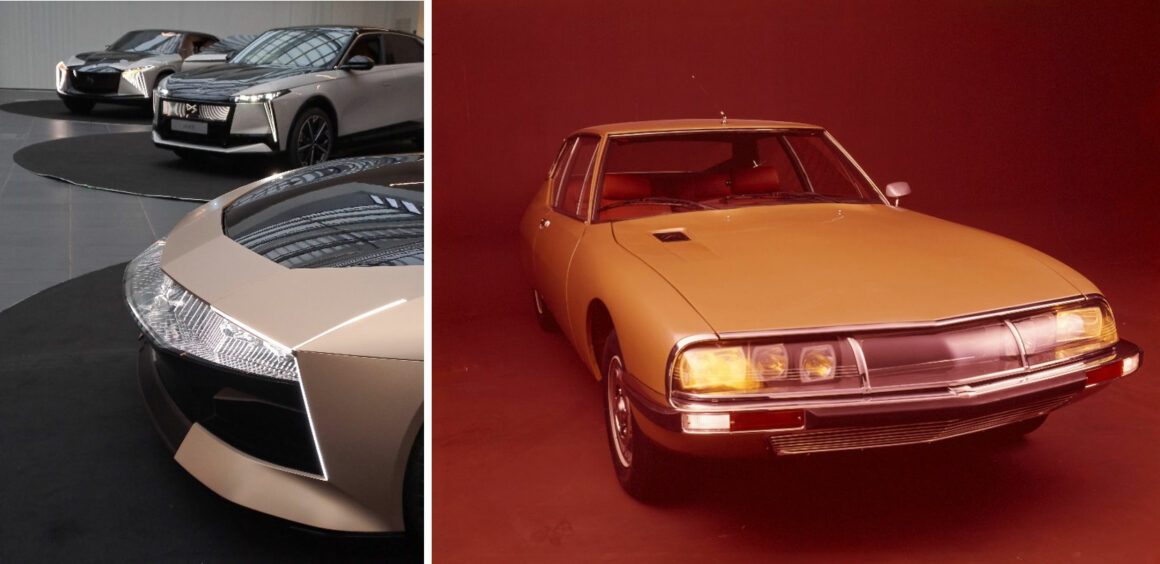
Moving from the front to the rear, DS Design also combines heritage and innovation.
- Rear turn signal at the upper outboard corners of the backglass of the DS9, as on the DS

- Covered rear wheel including a rear side marker lamp (unusual outside North America)
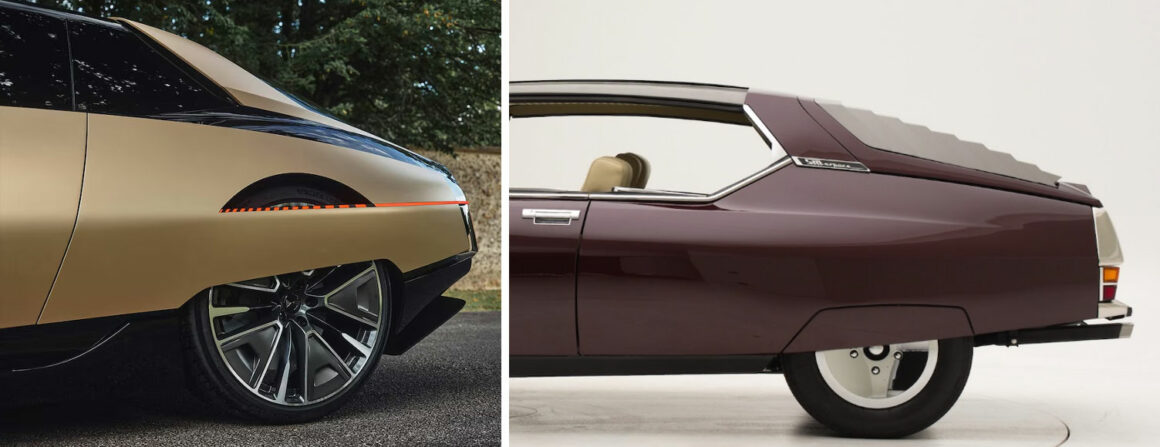
- Innovative first infinite-mirror rear lamp on the 2014 DS3
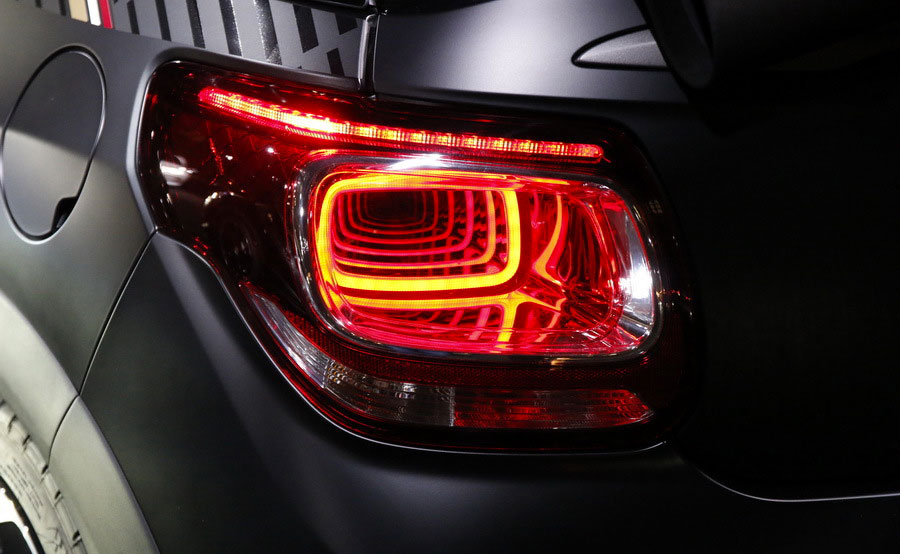
- Scale rear lamp design. Thierry explained the origin and evolution of this brand-identifying design on all DS models (DS3, DS4, DS7, DS9, and now № 8). First concepts were done with body-colour lamps on the X-Tense in 2018 and the Aero Sport Lounge in 2020.

- From concept to mass production cars, the scale design was integrated into the rearlamp. Laser etching technology has been developed on a metalized foil covering a white box and indirect LED PCB.

On the DS № 8, the bezel is now a black-painted item. Virtually all chrome has been removed to keep a black appearance on all exterior components.

We can recognize the DS signature by the vee-shaped front signalling lights now also on the rear for the first time in production, after a first concept on the Aerolounge. Called the DS Lightblade, this technology, beautifully executed by Odelo, combines the rear position lamp function with the turn indicator on the vertical blade, and with the stop lamp on the horizontal blade. This blade is also efficient for aerodynamics: 1 dm2 drag savings, equivalent to 4 km WLTP range.
As explained by Thierry Metroz, the main interest of this signature is to see and recognize the car from 100 metres. The fishscale design, for its part, can be seen from 3 metres. So the car presents fascinating lighting design to observers near and far!
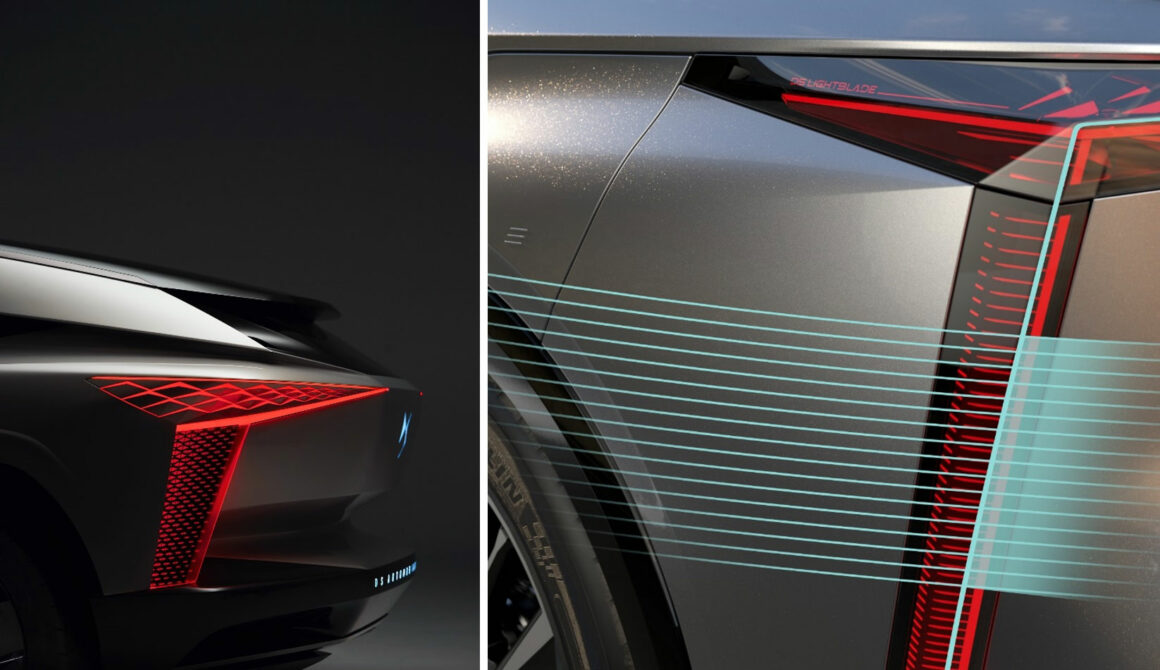
Thierry explained in detail how DS use lighting for interior design. There’s a reprise of the vee-shaped DRL design in the door, for example.
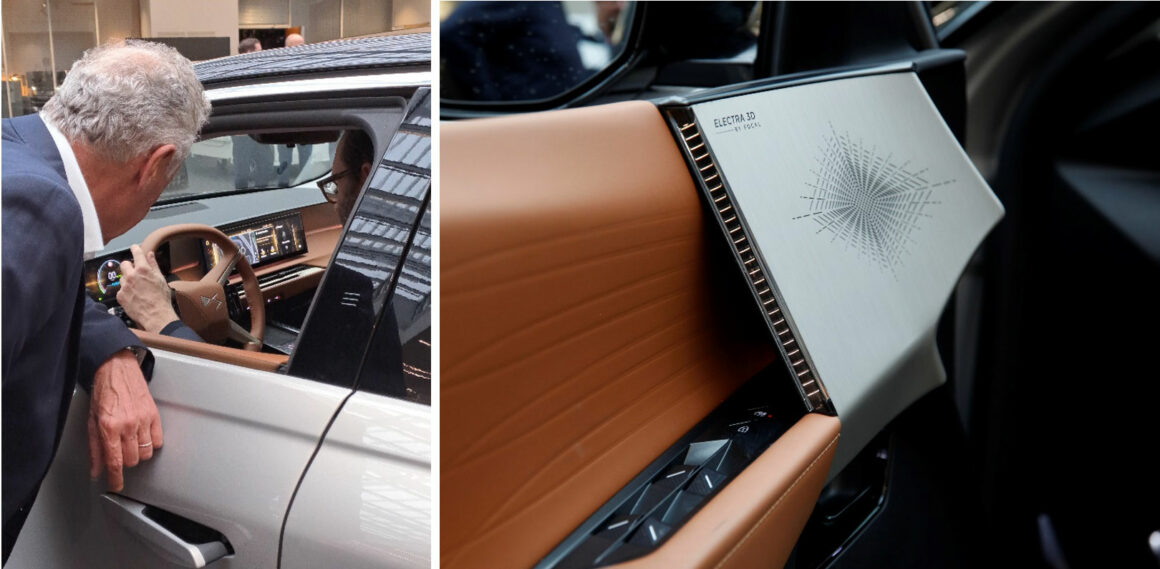
Interesting central console with lit surface.
Truly, there is intriguing, inviting lighting design everywhere on, in, and around a DS. It is a primary main anchor point for the brand’s familial design expression!


